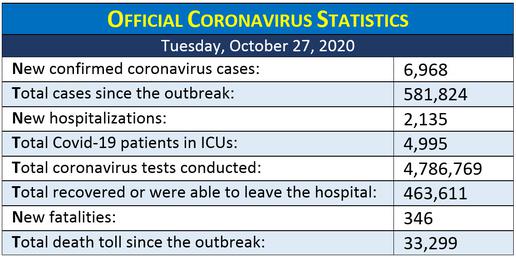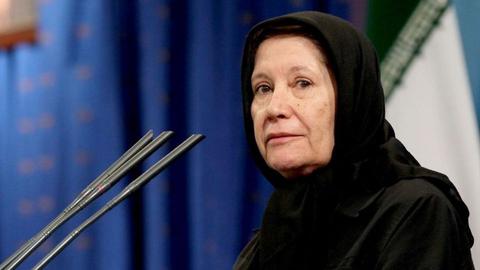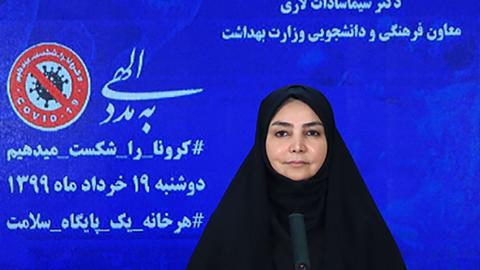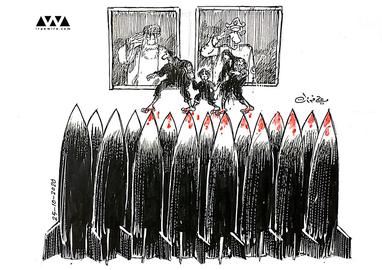How many people in Iran have really been infected with coronavirus or are likely to be infected in the future? Statistics released by the health ministry do not tally with field reports from provinces and the hospitals. People are confounded by contradictory information they receive about the pandemic: the number of cases and fatalities, the availability of beds in hospitals, the availability of medication, the situation regarding flu and coronavirus vaccines, the effects of air pollution and the colder weather on the pandemic, unclear decisions and guidelines, conflicting statements and assertions by officials and the media, and so on.
It is no surprise, then, that many people have been ignoring the guidelines approved by the coronavirus taskforce, including the temporary closure of businesses, wearing masks and avoiding travel. What is worse is that often the government itself does not take these decisions and guidelines seriously, and puts little effort into enforcing them.
On Saturday, October 24, Ayatollah Khamenei and President Rouhani attended a National Coronavirus Taskforce meeting, where it was decided that further restrictions were to be imposed in 43 cities in a red state of alert, and a range of businesses were to be closed down for at least a week. Later, the Supreme Leader called on “jihadi” forces of the paramilitary Basij and mosques to take an active and key role in coronavirus crisis management.
However, there are already signs that the new round of restrictions might meet the same fate as previous ones. On October 27, the great stadium of the holy city of Mashhad, which is currently experiencing one of its worst weeks since the beginning of the coronavirus outbreak, hosted the “Allegiance Jubilee,” a ceremony to renew allegiance to the Hidden Imam, the messiah that Shias believe will emerge from hiding and establish peace and justice.
Denying the claim by a speaker at the ceremonies who said he had received a permit for the gathering, Kianoush Jahanpour, head of the health ministry’s information center, tweeted: “neither the health ministry nor the Mashhad University of Medical University has issued a permit to a group or an individual to hold a gathering or a public ceremony called ‘allegiance’ or anything else, especially only 48 hours after directives for fighting coronavirus were issued by the exalted Supreme Leader.”
“I can only say that I am sorry,” said Dr. Minoo Moharez from the National Coronavirus Taskforce’s Scientific Committee. “Those who held such a gathering in Mashhad are responsible and must be held accountable.” She failed to suggest any action for holding the organizers “accountable.”
The health ministry’s spokeswoman Dr. Sima Sadat Lari called the holding of these ceremonies “a crime.” “This event caught us off guard,” she said. “We tried hard to find out who had issued the permit but nobody knew anything about it. In this situation, when we are all wanting more restrictions to control the contagion, this is a crime.”
News reports continue to present contradictory figures for coronavirus infections and fatalities. Some health officials say that official numbers must be doubled or even quadrupled to understand the depth of the coronavirus crisis in Iran.
On October 27, Dr. Reza Malekzadeh, deputy health minister for research and technology, added a new figure to the mix. According to studies, he claimed, by the end of September, approximately 35 million Iranians had been infected with coronavirus. “These 35 million are immune because they have had coronavirus, meaning that they no longer need a vaccine. But we must be aware that around 50 million Iranians are still at risk because they have not been infected with this disease.”
On July 18, President Rouhani had presented similar, if lower, precursor numbers. At a meeting of the National Coronavirus Taskforce, referring to a report that he had received from the health ministry, Rouhani said that 25 million Iranians had “left coronavirus behind,” and that between 30 and 35 million people were in danger of infection in the coming months. At the time, this statement sparked a controversy and at least one health official suggested he had misunderstood the report.
Daily statistics regarding infections and fatalities show that Iran is at the height of the epidemic, said Dr. Payam Tabarsi, head of the infectious diseases ward at Tehran’s Masih Daneshvari Hospital. “Our main problem is that people have resumed their travels, and also parties and weddings have resumed.”
He paid lip service to the role played by the Supreme Leader in fighting coronavirus but then dismissed new restrictions imposed in 43 cities as ineffective and not very different from previous ones. “We are not going to get the desirable outcome with these restrictions,” he said. “To reduce infections we need a shutdown of two or three weeks, and the reopenings must take place little by little and carefully.”
News From Gilan and West Azerbaijan
In the 24-hour period spanning October 26 and October 27, 304 new coronavirus patients were hospitalized in West Azerbaijan province, reported Dr. Javad Aghazadeh, president of West Azerbaijan University of Medical Sciences. “The number of hospitalized patients with acute pulmonary syndrome now stands at 1,427,” he said. “Two hundred and sixty-nine of them are in ICUs and 74 are connected to ventilators.” This number of new hospitalizations in just one day is alarming because only a daily average of 1,500 coronavirus tests are conducted in this province.
Seven students from Gilan University of Medical Sciences with coronavirus symptoms have been tested and are waiting for their test results, reported Fardin Mehrabian, the university’s vice president. Prior to this, 18 students at the university had been infected and currently two medical interns are hospitalized.
Iran’s Latest Coronavirus Statistics
In her daily briefing for October 27, the health ministry spokeswoman Dr. Sima Sadat Lari announced the official coronavirus statistics for the last 24 hours:

Dr. Lari also reported that all 31 Iranian provinces are in red, orange or yellow states of alert.

This is part of IranWire's coronavirus chronology. Read the full chronology
visit the accountability section
In this section of Iran Wire, you can contact the officials and launch your campaign for various problems



























comments